Amfipoli - Filippoi - Kavala Tour
Estimated Duration
10 Hours
Estimated Distance
490 Km
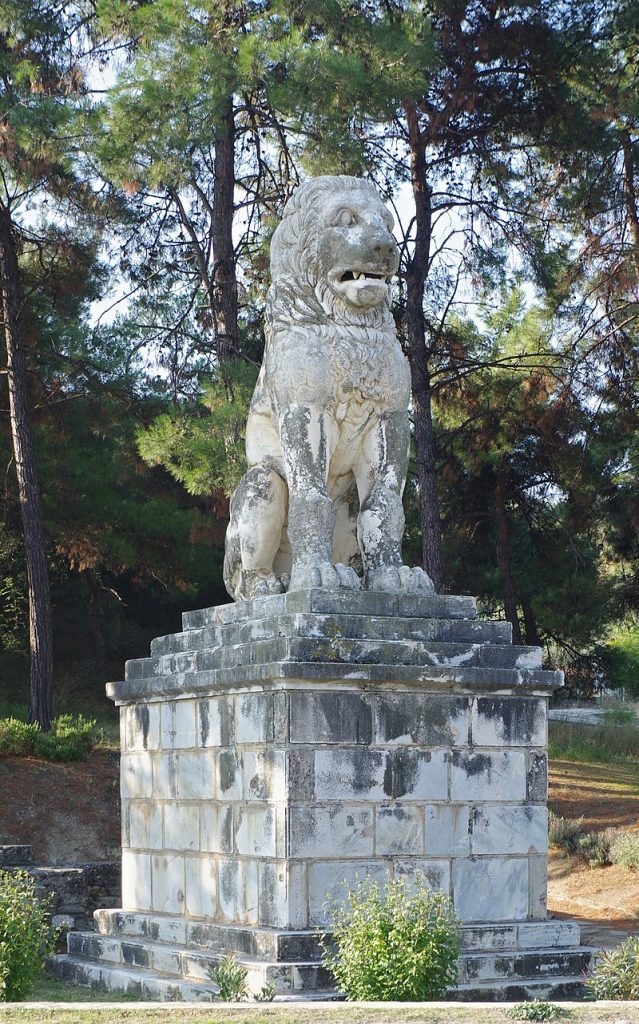
Archaeological Site of Amfipoli
Founded as an Athenian colony in 438/7 BC, ancient Amfipolis was strategically located near the fertile mouth of the river Strymon and the Pangaion gold mines. The area surrounding the banks of the river was inhabited since the Neolithic period, while from the mid-7th century BC the north Aegean coastline attracts the dynamic city-states of southern Greece Chalkis, Eretria and Corinth, which along with Miletos, the major Ionian city of Minor Asia, establish colonies in the peninsula of Chalkidice and along the Thracian coasts. These colonies will have a strong impact on the material culture of the Macedonian inland, which from now on reflects strong Ionic features, as it is apparent from the Late Archaic and Early Classical sculptures or the burial findings of the site. Important evidence for the economic and cultural exchange networks provides also the imported Corinthian and Athenian pottery. Local tradition survives in metalwork, which is mainly represented by bronze and gold ornaments.
The Athenian presence in the area began after the Persian Wars. In 476 BC the Athenians occupied the city of Eion and established a settlement at Ennea Hodoi, which however lived shortly, until 464 BC. The foundation of Amfipolis finally in 438/ 437 BC, in the time of Pericles, by the general Hagnon was a great success for the Athenians, whose chief purpose was to ensure control of the rich Strymon hinterland and the Pangaion gold mines. Their success, however, was again temporary; at the end of the first decade of the Peloponnesian War (422 BC) Amfipoli seceded from its metropolis, Athens, and remained independent until its incorporation into the kingdom of Macedonia by Philip II (357 BC).
Under the Macedonians, Amfipolis remained a flourishing city and an important economic and cultural centre of the kingdom. The excavations have revealed so far remains of buildings and sanctuaries in the public and residential quarters of the ancient city. Extensive parts of the defensive walls are preserved to considerable height and in good condition, such as Gate C, the largest gate at the northern part of the walls. A remarkable structure and also rare to find in an excavation, is the bridge over Strymon, constructed by wooden beams.
After the Roman conquest of Macedonia (168 BC) Amfipolis became the capital of Macedonia Prima, one of the four regional divisions of the Roman province of Macedonia. As a station on the Via Egnatia and the capital of a rich hinterland, Amfipolis was favoured by the Roman emperors and, despite the devastations and sackings, remained one of the most important urban centres in Macedonia until late antiquity. The prosperity of the city is reflected in its monumental buildings with mosaic floors and mural paintings, as well as in the various and numerous finds of the excavations.
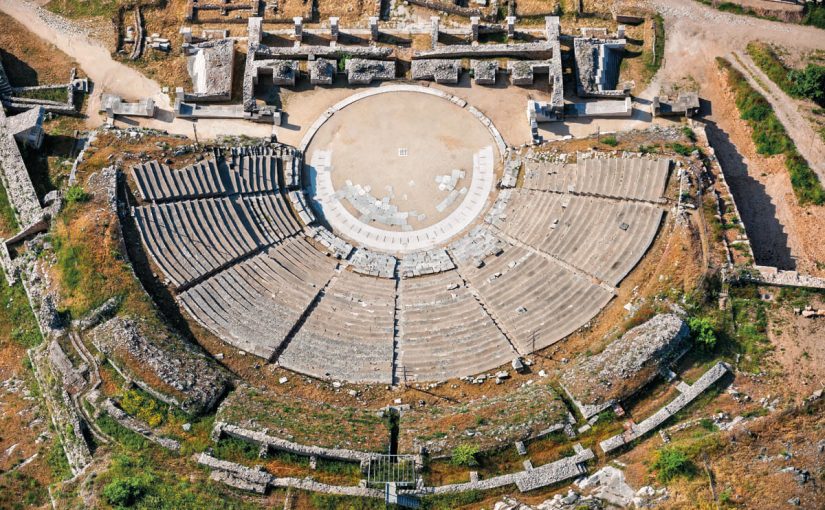
Archaeological Site of Philippi
The Archaeological Site of Philippi, the most important one in the Eastern Macedonian area of Greece, is on UNESCO’s list of World Heritage Monuments since mid-July 2016, satisfying all the institution’s significant and strict criteria. At the 40th Session of the Committee, which took place in Istanbul, from July 10th to 17th, Philippi was unanimously listed as a World Heritage Site.
The ancient city of Philippi was built by Thassian settlers, called Crenides (Krinides) in 360-359 BC and led by the exiled Athenian politician Kallistratus. In 356 BC King Philip II of Macedonia renamed the city after himself and used it to control the neighbouring gold mines of Mt. Paggaio, where he installed the Royal Mint. Following the Roman battle of Philippi in 42 BC, in which Octavian and Mark Antony defeated Brutus and Cassius, the city held a leading role of the Roman Empire on Via Egnatia.
When Apostle Paul visited in 49-50 BC, in his second and third missionary journeys, he founded the first European Christian Church and the settlement went on being the metropolis of Christianism. The prevalence of the new religion and the transfer of the Roman Empire’s capital to Constantinople lent glory to the City of Philippi. By the 7th century AD people left the city due to big earthquakes and the Slavic raids. During the Byzantine Period the town was a fortress. Its evacuation took place later on during the 14th century with the Turkish evasion.
In the Archaeological Site of Philippi you should pay a visit to its fortified walls and the Acropolis, within which you will encounter a tower dating back to the Byzantine Period; its theatre built in the 4th century BC (probably by Philippe II); the agora, part of a complex of public buildings built by Marcus Aurelius (161-180 BC) was the administrative centre of the Roman Empire and includes a mesmerising 40 m2 mosaic floοr; a palaestra with a little amphitheatre, rooms and a colonnaded courtyard; a Roman Cistern where Romans imprisoned Apostle Paul; the Octagon, a large temple complex, dedicated to Apostle Paul and three aisled basilicas dating back to 5th – 6th century.
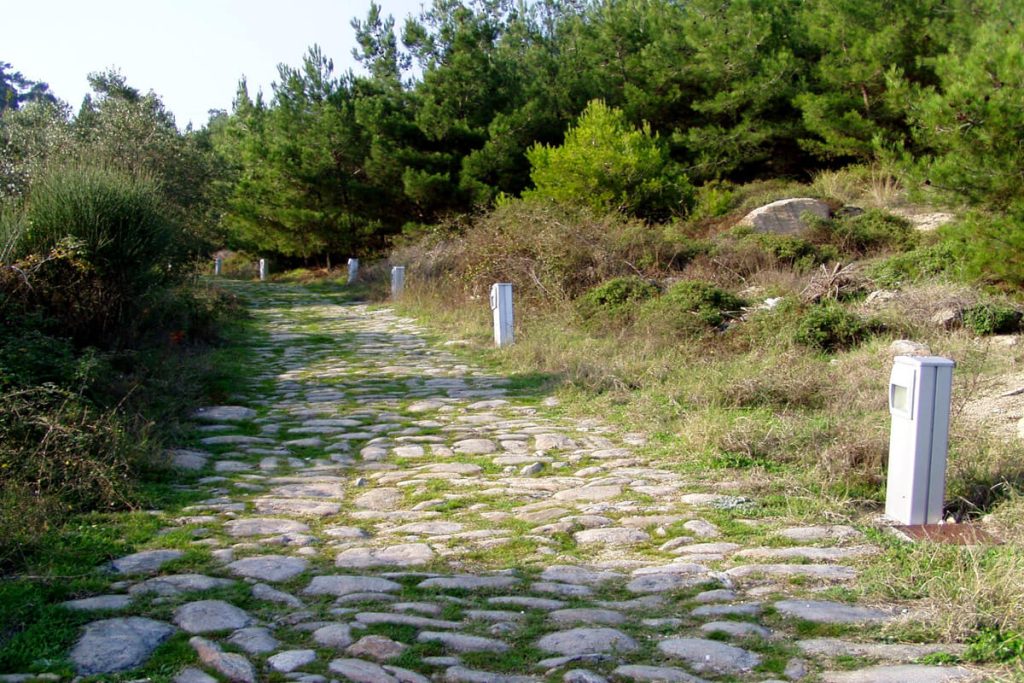
Ancient via Egnatia
The town of Kavala has the good fortune of preserving at its outskirts a large section of the ancient Via Egnatia. This is the old arterial road that, until the early 20th century, was the main road that connected Neapolis (an earlier name for Kavala) with the ancient city of Philippi. This route is of great historical and cultural significance. As a walking route, it has no particular difficulties, can be completed in a short period of time and is an easy route.
The ancient Via Egnatia is today divided into two sections, due to the motorways from Agios Silas that have been built. One section runs down from Agios Silas to the village of Stavros, looks out over the plain of Philippi and has a length of 400 m. The second and more interesting section of the old Via Egnatia, with a length of 1100 m, begins at the intersection of Egnatia and Makedonia Streets, beneath the Egnatia Hotel, and ends up at Jokaste Street. You can easily walk the well-preserved stone pavement that ascends alongside the stream or, even better, walk down it with the beautiful view of the town and its Fortress in front of you, while at the same time getting an idea of the picture visitors to Kavala saw in the old days.

The Acropolis of Kavala
The Acropolis of Kavala, built around the first quarter of 15th century, stands at the top of Panagia peninsula where the old town is situated. It was built on the remains of the Byzantine Acropolis of Christoupolis (former name of Kavala) which was destroyed in 1391, incorporating parts that survived from it. The various fortification interventions are quite obvious and were carried out by Byzantines, Venetians and Ottomans.
The entire Acropolis is built with local granite stone, mixed with marble and bricks. From the main gate, one can see the division between the internal and external enclosure by a transverse wall. The internal enclosure was the most crucial part of the Acropolis, as it enclosed the vital defense facilities.
One polygonal and two square towers are located in the external enclosure, along with a modern open air theatre that regularly accommodates music events, theatrical plays and various festivities. After touring the site, the visitors can enjoy their favorite beverage at the cafeteria while enjoying a view of the theatre.
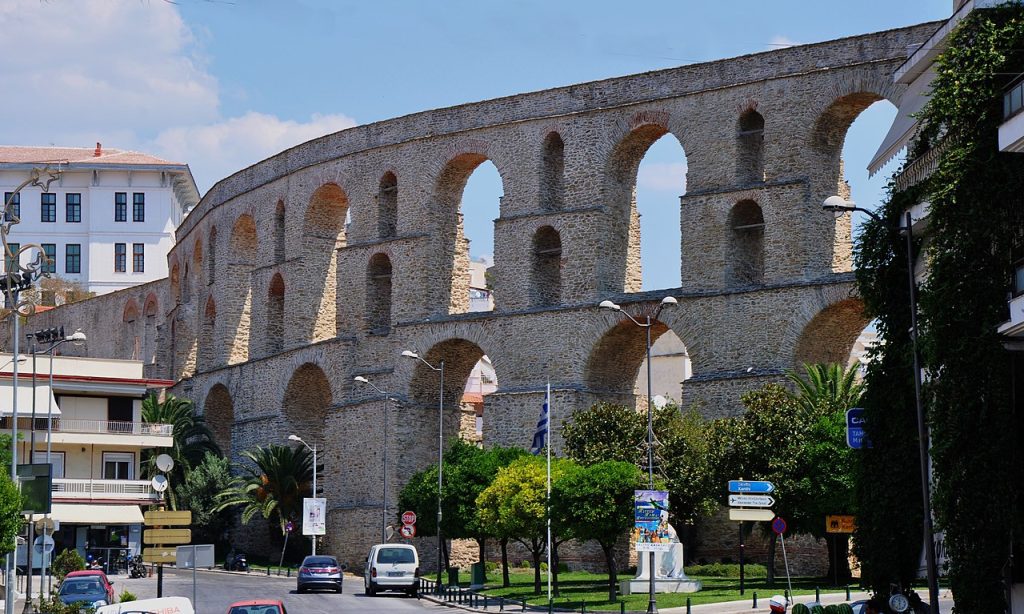
Aqueduct of Kavala
The most characteristic monument of Kavala is the large, arched aqueduct, known by the name “Kamares” (Arches), with a length of 270 m and a maximum height of 25 m. In the early 16th century, the arid peninsula of Panagia found a water supply in the streams that ran from the area of Old Kavala.
The source of this water, which is located at an altitude of 400 m, is known as “the mother of the water”, “Soubasi” or the “three Karagatsia”. The Kamares in their present form date to the early 16th century and are attributed to Ibrahim Pasha, the vezir of Sultan Suleiman the Magnificent.
They were built in 1520-1530, a period during which many infrastructure works were carried out in Kavala, with the aim of reconstructing the city after the destruction of 1391.
The Kamares are a huge structure, out of proportion to the size of the then insignificant settlement. It is believed that there had been a Roman aqueduct on this same spot, over the ruins of which the Kamares were built. This old aqueduct supplied water to the town of Kavala through the region of Suyol (su-yol: “waterway”) until the early decades of the 20th century.
The Kamares are no longer of vital importance, but they maintain their beauty and grandeur and are a landmark of the town.
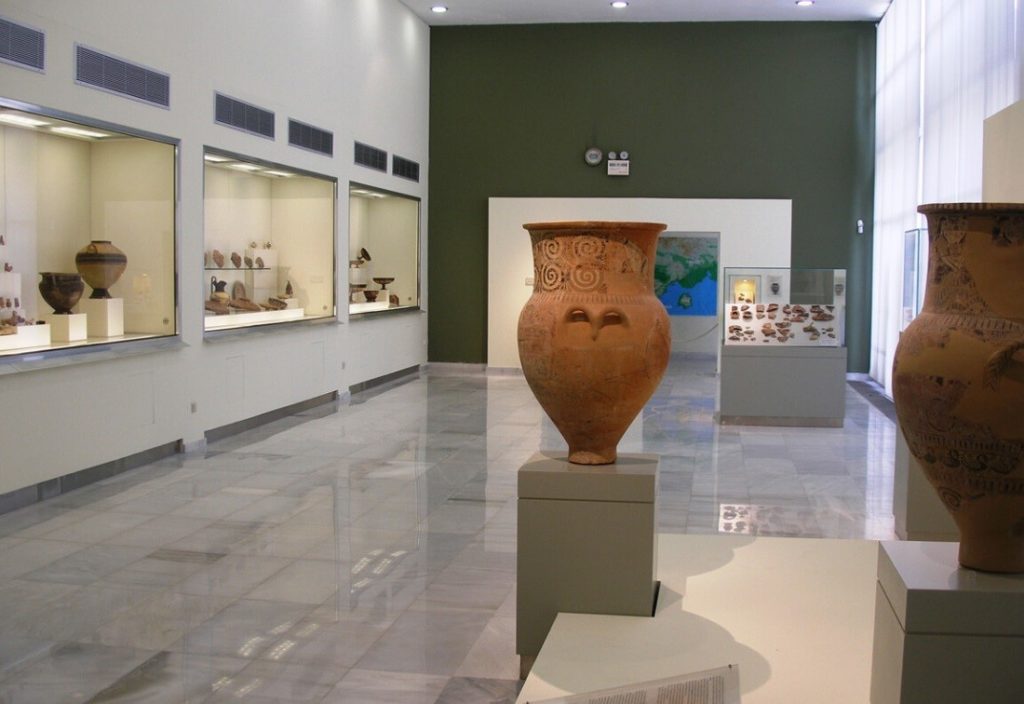
Archaeological Museum of Kavala
The Archaeological Museum of Kavala is considered one of the most important museums of its kind in Greece. It hosts representative finds from the broader area of Eastern Macedonia and Thrace.
Your tour begins in the Neolithic period with the finds from the site of Dikili Tash.
The largest section of the museum is dedicated to the permanent exhibition with the title “Neapolis – Christoupolis – Kavala”, the subject of which is the diachronic presence of the town through its monuments.
An important position in the Museum is held by the references to the goddess Parthenos, the patron goddess of Neapolis, and her sanctuary, the wonderful building from the ancient city that we know. This was a grand Ionic temple of the early 5th century BC built in white marble from Thassos.
In the museum you will see architectural parts from the temple, specifically two columns at their actual height, which is impressive! Other finds include sculptures, coins and a large collection of vases and figurines, which were usually dedicated by the faithful to the goddess, as well as a miniature marble temple, also dedicated in the sanctuary of the Parthenos, which may represent an earlier temple of the goddess’s.

